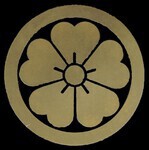-
Posts
3,242 -
Joined
-
Days Won
99

Guido replied to shrinkjag81's topic in Sword Shows, Events, Community News and Legislation Issues

Guido replied to dhusker's topic in Auctions and Online Sales or Sellers

Guido replied to gumanthon's topic in Translation Assistance

Guido replied to Rich T's topic in Sword Shows, Events, Community News and Legislation Issues

Guido replied to D-Lewis's topic in Translation Assistance

